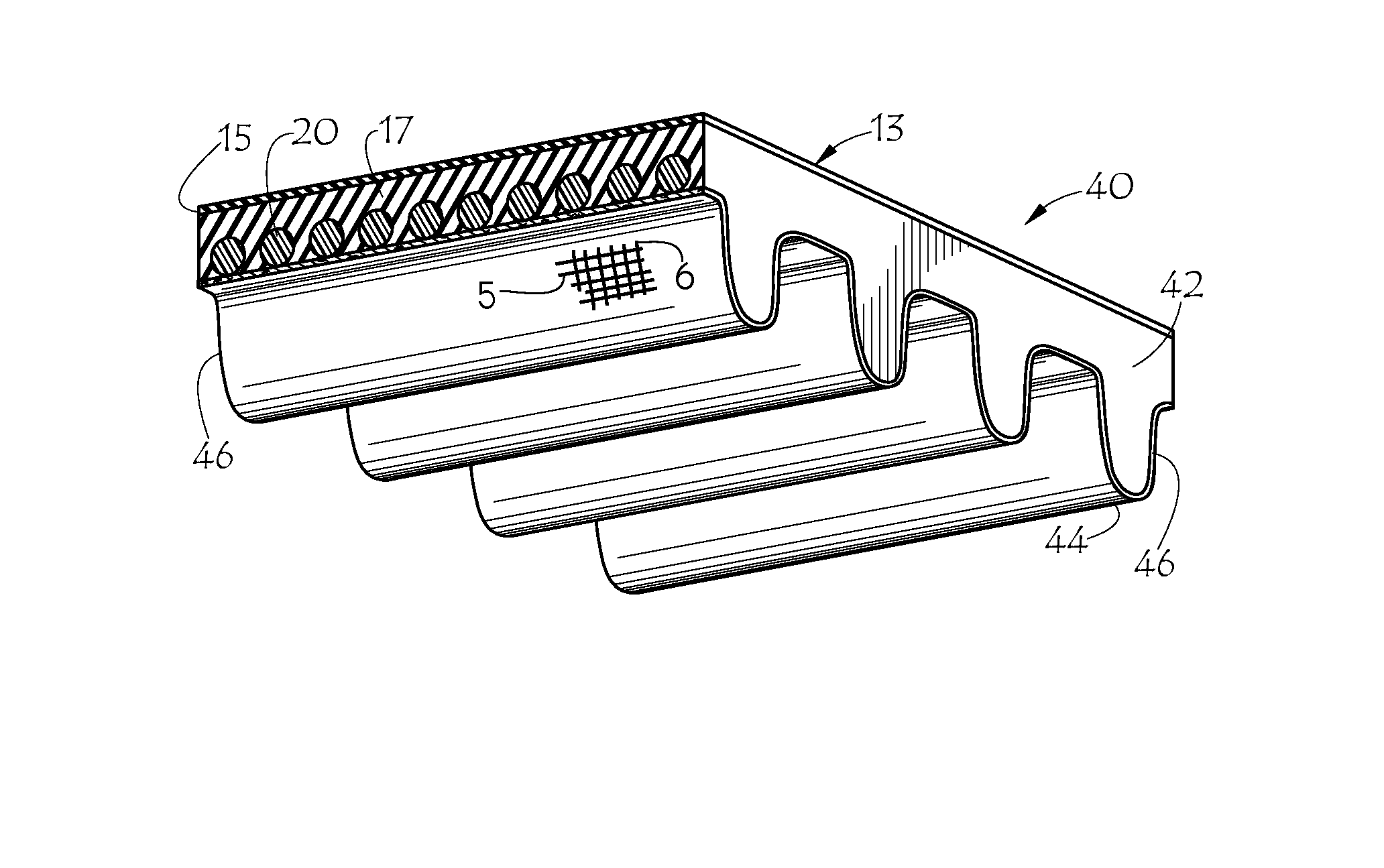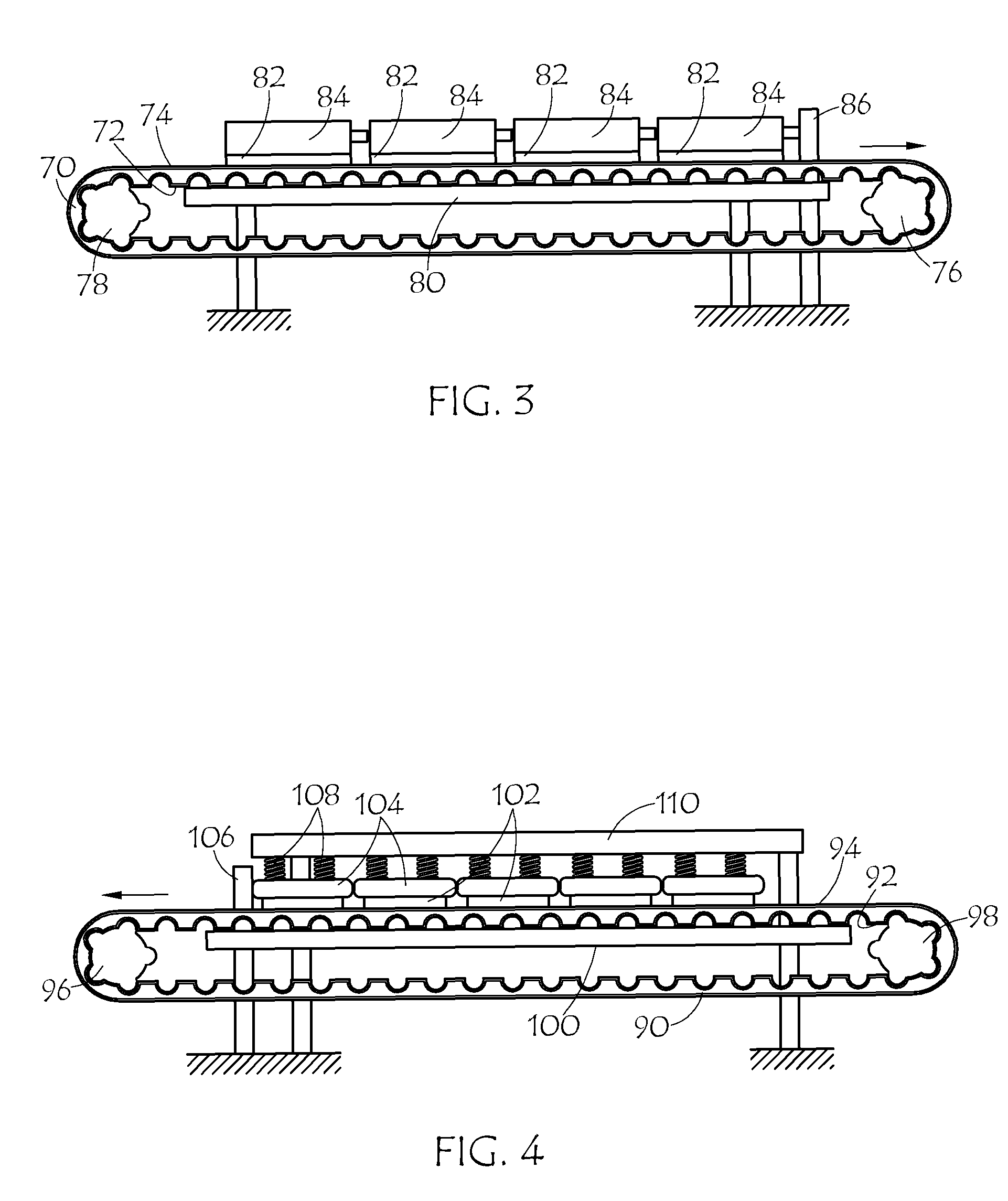Belt with wear-resistant anti-static fabric
a technology of anti-static fabric and belting, which is applied in the field of thermoplastic belting, can solve the problems of affecting the performance of the belting, affecting the safety of the belting, and the rapid loss of the anti-static effect during use, so as to achieve the effect of improving the wear resistance of the drive belt without adversely affecting other performance characteristics and advantageous frictional properties
- Summary
- Abstract
- Description
- Claims
- Application Information
AI Technical Summary
Benefits of technology
Problems solved by technology
Method used
Image
Examples
Embodiment Construction
[0020]FIG. 1 illustrates the construction of a toothed drive belt according to an embodiment of the invention. In FIG. 1, belt 40 is formed of an elastomeric body 42 in which is embedded a strain-resistant tensile cord 20. A series of cogs or teeth 44 are disposed on the underside of the belt and adapted to mesh with corresponding teeth of a sprocket in gear-like fashion to transmit power or motion without slipping. Belt 40 employs a textile fabric 15 at the back side 13 or back surface of the belt. A layer 17 of elastomer may be interposed between cord 20 and the back fabric 15. During processing the elastomer material of layer 17 may penetrate the back fabric 15. The layer 17 and body 42 may be of the same elastomeric material, for example a thermoplastic polyurethane (“TPU”) or a rubber compound or the like. The layer 17 the body 42 or both may be compounded with an antistatic ingredient or conductive filler such as carbon black, conductive carbon black, graphite, carbon fiber, m...
PUM
| Property | Measurement | Unit |
|---|---|---|
| surface resistivity | aaaaa | aaaaa |
| length | aaaaa | aaaaa |
| length | aaaaa | aaaaa |
Abstract
Description
Claims
Application Information
 Login to View More
Login to View More - R&D
- Intellectual Property
- Life Sciences
- Materials
- Tech Scout
- Unparalleled Data Quality
- Higher Quality Content
- 60% Fewer Hallucinations
Browse by: Latest US Patents, China's latest patents, Technical Efficacy Thesaurus, Application Domain, Technology Topic, Popular Technical Reports.
© 2025 PatSnap. All rights reserved.Legal|Privacy policy|Modern Slavery Act Transparency Statement|Sitemap|About US| Contact US: help@patsnap.com



